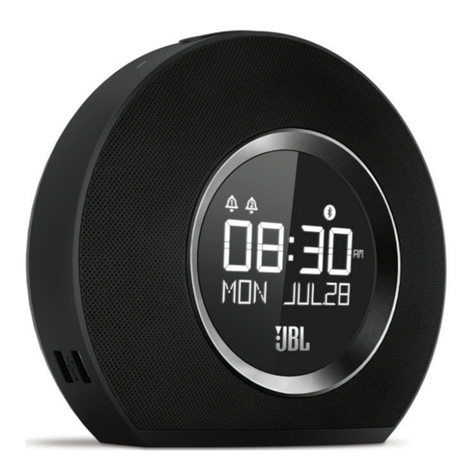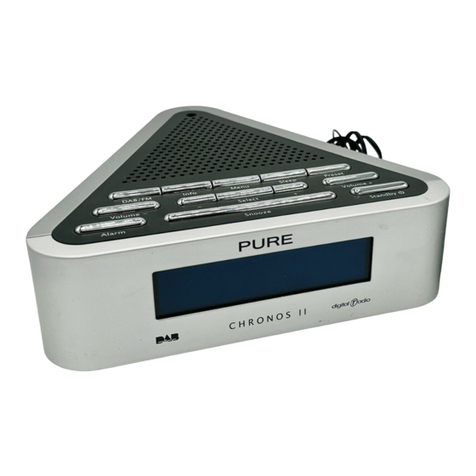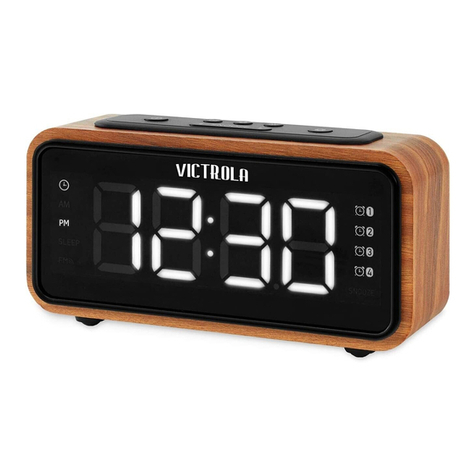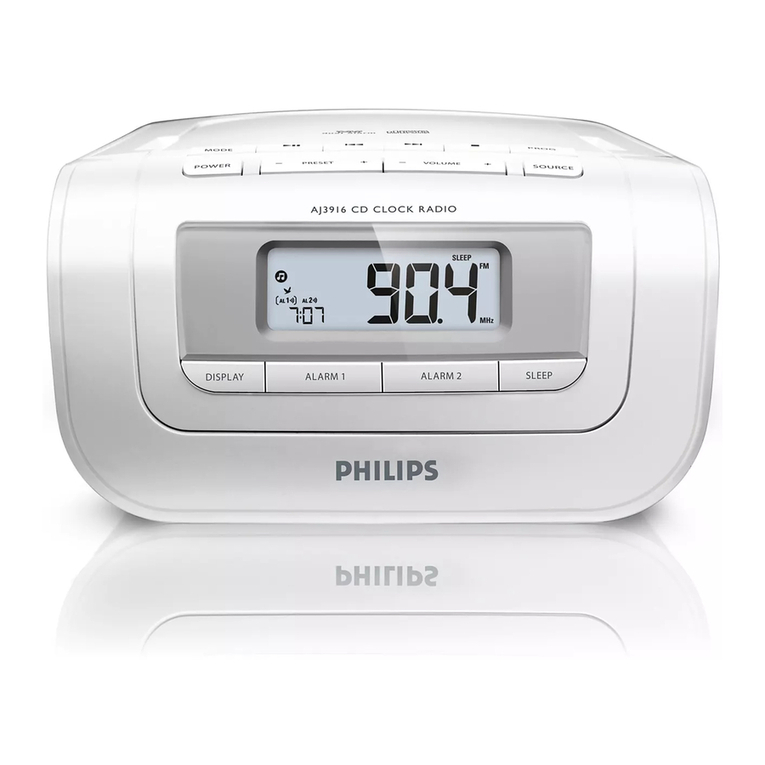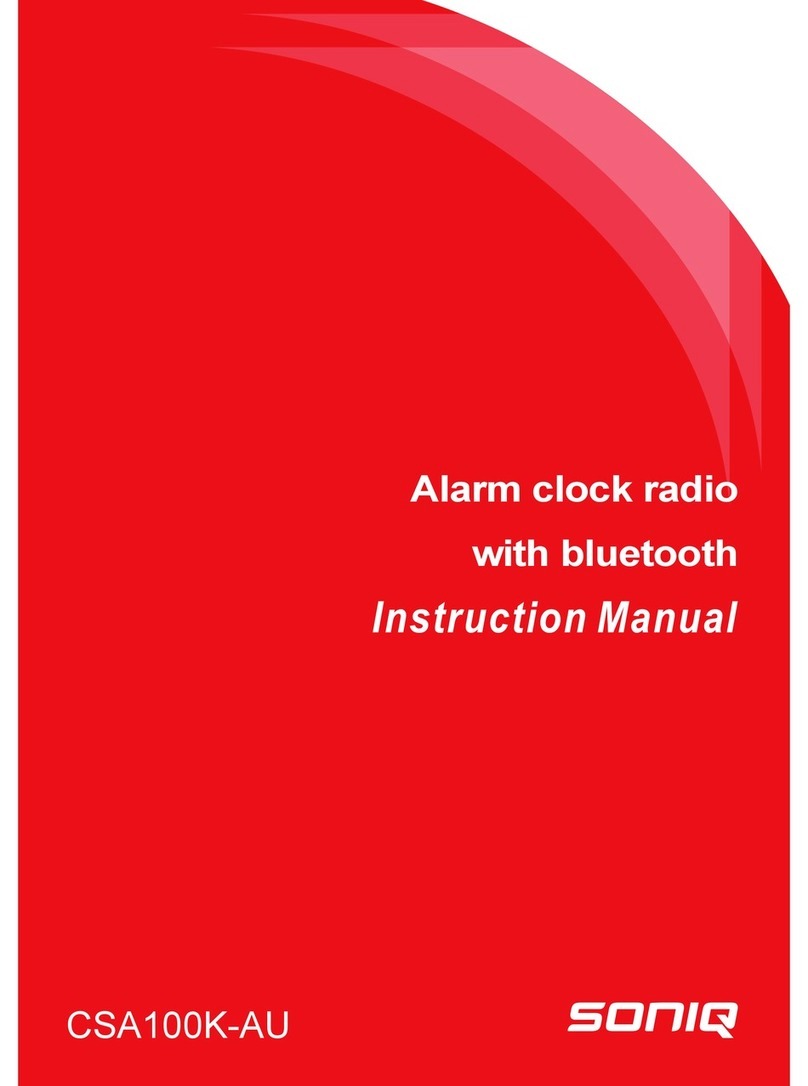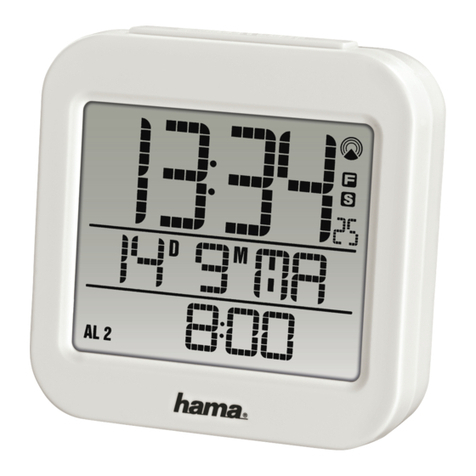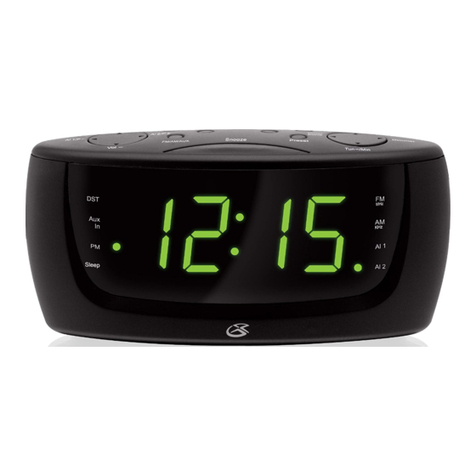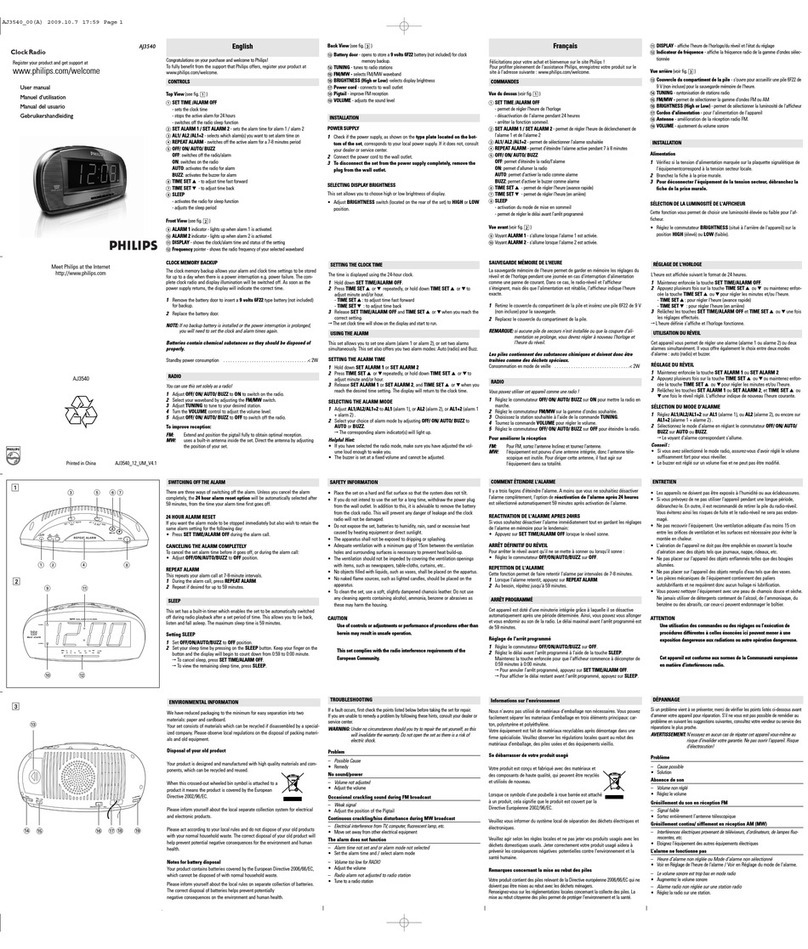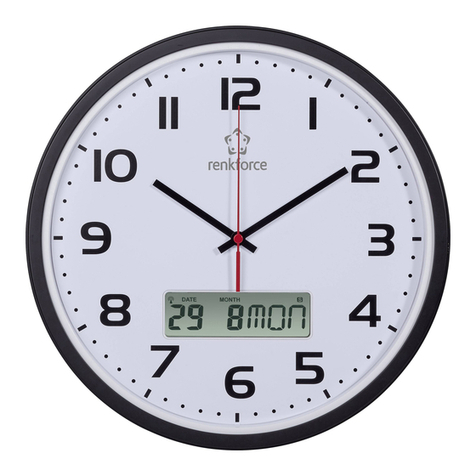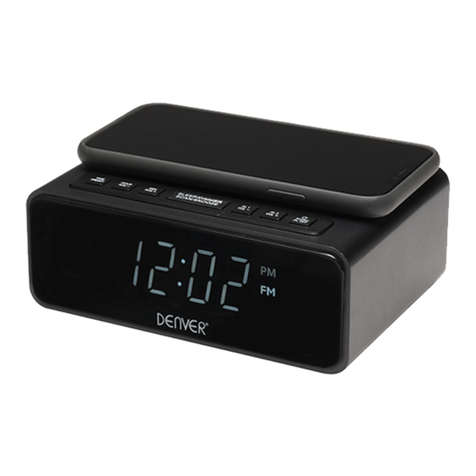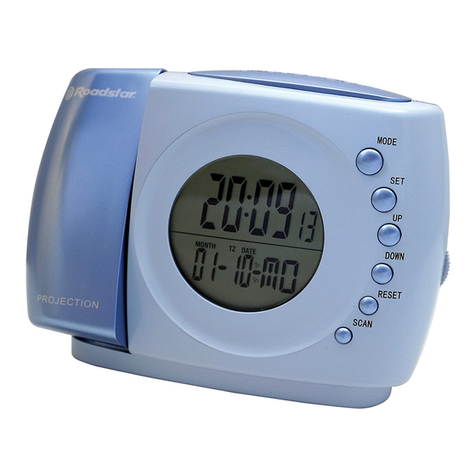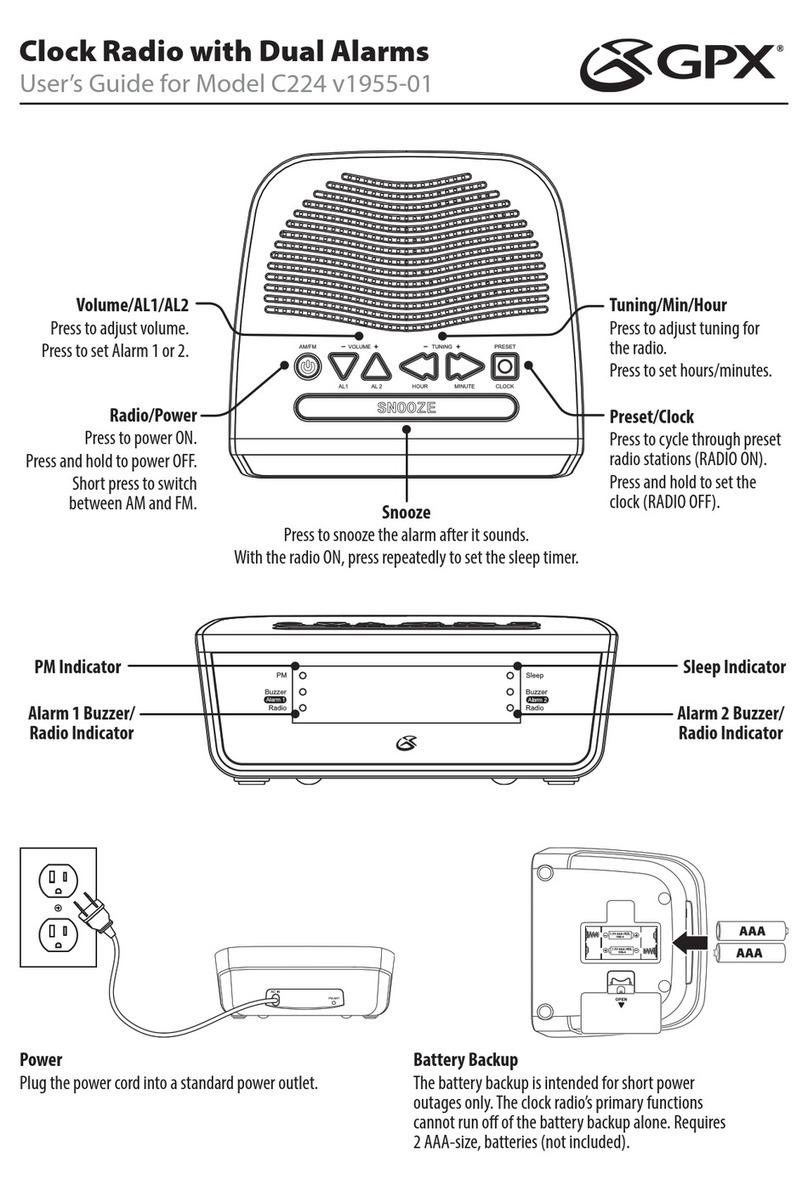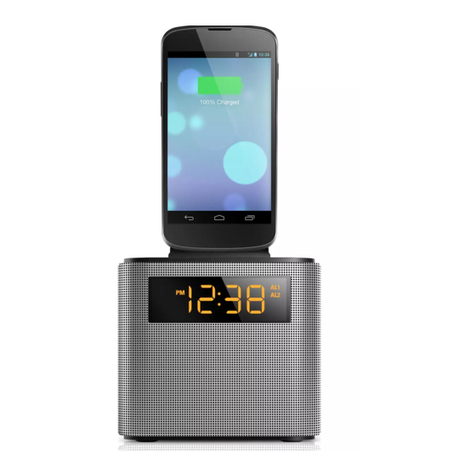JBL Horizon 2 User manual

SKU:
JBLHORIZON2BLKEU/JBLHORIZON2GRYEU/HORIZON2HOTELBLKEU/HORIZON2HOTELGRYEU/JBL
HORIZON2BLKAM/JBLHORIZON2GRYAM/HORIZON2HOTELBLKAM/HORIZON2HOTELGRYAM/JBLHORIZO
N2BLKAS/JBLHORIZON2GRYAS/HORIZON2HOTELBLKAS/HORIZON2HOTELGRYAS/JBLHORIZON2BLKCN
/JBLHORIZON2GRYCN/HORIZON2HOTELBLKCN/HORIZON2HOTELGRYCN/JBLHORIZON2BLKJN/JBLHOR
IZON2GRYJN/HORIZON2HOTELBLKJN/HORIZON2HOTELGRYJN/JBLHORIZON2BLKBR/JBLHORIZON2GR
YBR/JBLHORIZON2BLKIN/JBLHORIZON2GRYIN/JBLHORIZON2GRYRU/JBLHORIZON2BLKRU/HORIZON2
HOTELGRYIN/HORIZON2HOTELBLKIN.
Contents
1. Technical Specifications.........................................................................................................2
2. Safety Instruction, Warning & Notes.....................................................................................3
3. Software upgrade Instruction & Reset Procedure.............................................................. 7
4. Disassembled Instruction....................................................................................................... 9
5. Block diagram.......................................................................................................................... 17
6. Wiring Diagram........................................................................................................................ 18
7. Mechanical Exploded View.................................................................................................... 31
8. Spare Parts List....................................................................................................................... 32
9. Button Behaviour..................................................................................................................... 34
10.Revision List........................................................................................................................... 35
Released by Global Quality SL Harman/Kardon, Inc. Ver.1.0 Jun 2020
8500 Ballboa Blvd.
Northridge, CA 91329
Horizon 2 Bluetooth Clock Radio with USB charging & Ambient Light
Service Manual

2
1.
TECH SPEC
Model Name Horizon2
2 x 4W RMS2x 4W@1%THD
Output power: Rated Output Power
Input Sensitivity
Frequency Response @1W
BT: -9dBFS +/- 1dB
Aux : 370mVrms+/-10%
AUX: 20Hz to 20KHz +/- 1dB (EQ setting is
disable)
BT: 20Hz to 19KHz +/- 1dB (EQ setting is disable)
THD+N at 1W <0.4%
THD+N at Rated Output Power 2x 4W@1%THD
Signal-to-Noise ratio at Rated
Output Power 80dB (A-Weighted)
Bluetooth version: 4.2
Bluetooth transmitter frequency
range: 2402 − 2480MHz
Bluetooth transmitter power: <4dBm
Bluetooth transmitter modulation: GFSK, π/4 DQPSK, 8DPSK
HE-AAC, LC-AAC, MP3, Vorbis, WAV (LPCM), FLAC,
Supported audio formats: Opus
Dimensions (Dia x H): 170 x 160 mm
Weight: 819g

2.
Safety Instruction, Warning & Notes
RISK OF ELECTRIC SHOCK.DO NOT OPEN
THE LIGHTNING FLASH WITH AN ARROWHEAD SYMBOL,WITHIN AN EQUILATERAL
TRIANGLE,IS INTENDED TOALERT THE USER TO THE PRESENCEOF UNINSULATED
DANGEROUS VOLTAGE WITHIN THE PRODUCT’S ENCLOSURETHAT MAY BE OF
SUFFICIENT MAGNITUDE TO CONSTITUTE A RISK OF ELECTRIC SHOCK TO PERSONS.
THE EXCLAMATION POINT WITHIN AN EQUILATERAL TRIANGLE IS INTENDED TO
ALERT THE USER TO THE PRESENCE OF IMPORTANT OPERATING AND
MAINTENANCE(SERVICING)INSTRUCTION IN THE LITERATURE ACCOMPANYING THE
PRODUCT.
WARNING:TO REDUCE THE RISK OR ELECTRIC SHOCK,DO NOT EXPOSE THIS APPARATUS TO RAIN OR
MOISTURE.
CAUTION FCC AND ICSTATEMENT FOR USERS (USA AND CANADA ONLY)
This device complies with part 15 of the FCC Rules.Operation is subject to the following two conditions:(1)This device
may not cause harmful interference,and(2)this device must accept any interference received,including interference
that may cause undesired operation.CAN ICES-3(B)/NMB-3(B)
FCC SDOC SUPPLIER’S DECLARATION OF CONF ORMITY
HARMAN International hereby declares that this equipment is in compliance with the FCC Part 15 Subpart B.
The declaration of conformity may be consulted in the support section of our Web site,accessible from www.jbl.com
Federal Communication Commission Interference Statement
This equipment has been tested and found to comply with the limits for a Class B digital device,pursuant to Part 15 of
the FCC Rules.These limits are designed to provide reasonable protection against harmful interference in a
residential installation.This equipment generates,uses and can radiate radio frequency energy and,if not installed and
used in accordance with the instructions,may cause harmful interference to radio communications,However,there is
no guarantee that interference will not occur in a particular installation.If this equipment does cause harmful
interference to radio or television reception,which can be determined by turning the equipment off and on,the user is
encouraged to try to correct the interference by one or more od the following measures:
·Reorient or relocate the receiving antenna.
·Increase the separation between the equipment and receiver.
·Connect the equipment into an outlet on a circuit different from that to which the
receiver is connected.
·Consult the dealer or an experienced radio/TV technician for help.
Caution:Changes or modifications not expressly approved by HARMAN could void
the user’s authority to operate the equipment.
For Products That Transmit RF Energy
FCC AND IC INFORMATION FOR USERS
This device complies with Part 15 of the FCC rules and Industry Canada license-
exempt RSS standars(s).
Operation is subject to the following two conditions:(1)This device may not cause
harmful interference;and (2)this device must accept any interference
received,including interference that may cause undesired operation.
FCC/IC Radiation Exposure Statement
This equipment complies with FCC/IC RSS-102 radiation exposure limits set forth
for an uncontrolled environment.
For Wi-Fi 5G device
FCC Caution
High power radars are allocated as primary user of the 5.25 or 5.35 GHz and 5.65 to
5.85GHz bands.These radars stations can cause interference with and/or damage
this device.
No configuration controls are provided for this wireless equipment allowing any
change in the frequency of operations outside the FCC grant of authorization for US
operation according to Part 15.407 of the FCC rules.
IC Caution
User should also be advised that:
(i)The device for operation in the band 5150-5250MHz is only for indoor use to
reduce the potential for harmful interference to co-channel mobile satellite
systems;(ii)the maximum antenna gain permitted for devices in the bands5250-
5250MHz and 5470-5725MHzshall comply with the e.i.r.p.limit:and (iii)The maximum
antenna gain permitted devices in band 5725-5825MHz shall comply with the
e.i.r.p.limits specified for point-to point and non point-to -point operation as
appropriate.
(iv)User should also be advised that high-power radars are allocated as primary
users(i.e.priority users)of the bands 5250-5350MHz and 5650-5850MHz and that
these radars could cause interference and/or damage to LE-LAN devices.
3
IMPORTANT SAFETY INSTRUCTIONS
For all products:
1. Read these instructions.
2. Keep these instructions.
3. Head all warning.
4. Follow all instructions
5. Do not use this apparatus near water
6. Clean only with a dry cloth
7. Do not block any ventilation openings ,Install this apparatus in accordance with the
manufacture’s instructions.
8. Do not install this apparatus near any heat sources such as radiators,heat registers, stoves
or other apparatus(including amplifiers)that produce heat.
9. Dot not defeat the safety purpose of the polarized or grounding-typeplug
.A polarized plug has two blades with one wider than the other..A grounding-type plug has two
blades and a third grounding prong.the wide blades or the third prong is provided for your safety.If
the provided plug does not fit into your outlet, consult and electrician for replacement of the
obsolete outlet.
10. Protect the power cord from being walked on or pinched,particularly at plugs.convenience
receptacles and the point where they exit from theapparatus.
11. Use only attachment/accessories specified by the manufacturer.
12. Use only with the cart,stand,tripod,bracket or table specified by the
manufacturer or sold with the apparatus.When a cart is used, use caution
when moving the cart/apparatus combination to avoid injury from tip-over.
13. Unplug this apparatus during lighting storms or when unused for long periods of time.
14. Refer all servicing to qualified service personnel. Servicing is required when the apparatus
has been damaged in any way, such as when the power-supply cord or plug is damaged, liquid has
been spilled or objects have fallen into the apparatus, or the apparatus has been exposed to rain or
moisture, does not operate normally or has been dropped.
15. Do not expose this apparatus to dripping or splashing, and ensure that no objects filled with
liquids, such as vases, are placed on the apparatus
16. To disconnect this apparatus from the AC mains completely ,disconnect the power-supply
cord plug from the AC receptacle.
17. The mains plugs of the power-supply cord shall remain readily operable.
18. Do not expose batteries to excessive heat such as sunshine, fire or thelike.
19. This apparatus is intended to be used only with the power supply and/or charging cable
provided by the manufacturer.

Exposure of humans to RF fields (RSS-102)
The computers employ low gain integral antennas that do not emit RF field in excess of
Health Canada limits for the general population; consult Safety Code 6,obtainable from
Health Canada’s Web site at http://www.hc-scgcca/
The radiated energy from the antennas connected to the wireless adapters conforms to
The lC limit of the RF exposure requirement regarding IC 102, Issue 5 clause 4.SAR
tests are conduced using recommended operating positions accepted by the FCC/ RSS
with the device transmitting at its highest certified power level in all tested frequency
band without distance attaching away from the body. Non-compliance with the above
restrictions may result in violation of FCC RF exposure guidelines.
Use Restriction Attention in France, operation is limited to indoor use within the band
5150-5350MH.
For products with Radio Receivers That can Use an external
Antenna (USA ONLY):
CATV(Cable TV)or Antenna Grounding
If an outside antenna or cable system is connected to this product, be certain that it is grounded
so as to provide some protection against voltage surges and static charges. Section 810 of the
National Electrical Code (NEC),ANSI/NFPA NO.70-1984,provides information with respect
to proper grounding of the mast and supporting structure, grounding of the lead-in wire to
an antenna discharge unit size of grounding conductors, location of antenna discharge unit,
connection to grounding electrodes and requirements of the grounding electrode.
Note to CATV System Installer:
This reminder is provided to call the CATV(cable TV) system installer’s attention to article 820-40
of the NEC, which provides guidelines for proper grounding and, in particular, specifies that the
cable ground shall be connected to the grounding system of the building, as close to the point of
cable entry as possible
For CD/DVD/BIu-ray DiscTM Players:
Caution:
This product uses a laser system. To prevent direct exposure to the laser beam, do not open
the cabinet enclosure or defeat any of the safety mechanisms provided for your protection DO
NOT STARE INTO THE LASER BEAM. To ensure proper use of this product, please read the
owner's manual carefully and retain it for future use. Should the unit require maintenance or repair.
Please contact your local JBL service center.Refer servicing to qualified personnel only.
FOR ALL EU COUNTRIES:
For products that include audio out
Prevention of hearing loss
Caution: Permanent hearing loss may occur if earphones or headphones are
used at high volume for prolonged periods of time
For France, the products have been tested to comply with the Sound Pressure
Level requirement laid down in the applicable NF EN 50332-1: 2013 and/or
EN 50332-2: 2013 standards as required by French ArticleL.5232-1
Note: To prevent possible hearing damage, do not listen at high volume levels for long periods
WEEE Notice
The Directive on Waste Electrical and Electronic Equipment(WEEE), which entered into force as
European law on 14/02/2014, resulted in a major change in the treatment of electrical
equipment at end-of-life
The purpose of this Directive is, as a first priority, the prevention of WEEE, and in addition, to
promote the reuse, recycling and other forms of recovery of such wastes so as to reduce disposal
The WEEE logo on the product or on its box indicating collection for electrical and electronic
equipment consists of the crossed-out wheeled bin, as shown below.
This product must not be disposed of or dumped with tour other household waste. You are
liable to dispose of all your electronic or electrical waste equipment by relocating over to the
Specified collection point for recycling of such hazardous waste.Isolated collection and proper
Recovery of your electronic and electrical waste equipment at time of disposal will allow us
to help conserving natural resources. Moreover, proper recycling of the electronic and electrical
waste equipment will ensure safety of human health and environment. For more information
about electronic and electrical waste equipment disposal, recovery, and collection points, please
Contact your local city center,household waste disposal service,shop from where you purchased
the equipment, or manufacturer of the equipment
RoHS Compliance
This is product is in compliance with Directive 2011/65/EU and (EU)2015/863 of the European
Parliament
and of the Council of 31/03/2015 on the restriction of the use of certain hazardous substances in
electrical and electronic equipment
REACH
REACH (Regulation No 1907/2006) addresses the production and use of chemical substances and their
potential impacts on human hea lth and the environment. Article 33(1)of REACH Regulation requires
suppliers to inform the recipients ifan article contains more than 0. 1%(per weight per article) of any
substance(s)on the Substances of Very High Concern(SVHC) Candidate List (REACH candidate list’).
This product contains the substance"lead"(CAS-No. 7439-92-1)in a concentration of more than
0. 1% per weight.
At the time of release of this product, except for the lead substance, no other substances of REACH
candidate list are contained in a concentration of more than 0. 1% per weight in this product
Note: On June 27, 2018, lead was added to the REACH candidate list. The inclusion of lead in the
REACH candidate list does not mean that lead-containing materials pose an immediate risk or results
in a restriction of permissibility of its use.
For Products That Include Batteries
EU Batteries Directive 2013/56/EU
A new battery directive 2013/56/EU on Battery and Accumulator replacing directive entered
into force on the01/07/2015.The directive applies to all types of batteries and accumulators
/AA, AAA, button cells, lead acid, rechargeable packs) including those incorporated into
appliances except for military, medical and power tool applications. The directive sets out
Rules for collection, treatment, recycling and disposal of batteries,and aims to prohibit certain
hazardous substances and to improve environmental performance of batteries and all operators
in the supply chain.
Instructions for Users on Removal, Recycling and Disposal of Used Batteries
To remove the batteries from your equipment or remote control, reverse the procedure described
In the owners manual for inserting batteries For products with a built-in battery that lasts for
the lifetime of the product, removal may not be possible for the user. In this case, recycling or
recovery centers handle the dismantling of the product and the removal of the battery. If, for
any reason,it becomes necessary to replace such a battery, this procedure must be performed
by authorized service centers. In the European Union and other locations, it is illegal to dispose
Of any battery with household trash. All batteries must be disposed of in an environmentally
sound manner. Contact your local waste-management officials for information regarding the
environmentally sound collection, recycling and disposal of used batteries.
4

In case of batteries ,accumulators and button cells containing more than 0.0005% mercury, more
than.002% cadmium or more than 0.004% lead, shall be marked with the chemical symbol
for the metal concerned: Hg, Cd or Pb respectively. Please Refer to the below symbol
WARNING: Danger of explosion if battery is incorrectly replaced. To reduce risk of fire or bums,
don't disassemble, crush, puncture, short external contacts, expose to temperature above 60C
(140F), or dispose of in fire or water. Replace only with specified batteries. The symbol indicating
“Separate collection” for all batteries and accumulators shall be the crossed-out wheeled bin
Shown below:
WARNING
DO NOT INGEST BATTERY, CHEMICAL BURN HAZARD [The remote control supplied with) This
product contains a coin/button cell battery. If the coin/button cell battery is swallowed, it can
cause severe internal burns in just 2 hours and can lead to death. Keep new and used batteries
away from children. If the battery compartment does not close securely, stop using the product
and keep it away from children. If you think batteries might have been swallowed or placed
inside any part of the body, seek immediate medical attention.
For All Products Except Those with Wireless Operation
HARMAN International hereby declares that this equipment is in compliance with the EMC
2014/30/EU Directive, LVD 2014/35/EU Directive. The declaration of conformity may be
Consulted in the support section of our Web site accessible from www.jbl.com.
For All Products with Wireless Operation
HARMAN International hereby declares that this equipment is in compliance with the essential
requirements and other relevant provisions of Directive 2014/53/EU. The declaration of
Conformity maybe consulted in the support section of our Web site accessible from www.jbl.com
HARMAN International Industries, Incorporated. All rights reserved JBL is a trademark
of HARMAN International Industries, Incorporated, registered in the United States and/or other
countries. Features, specifications and appearance are subject to change without notice.
www.jbl.com
5

6
SAFETY PRECAUTIONS
The following check should be performed for the continued
protection of the customer and service technician.
LEAKAGE CURRENT CHECK
Measure leakage current to a known earth ground (water
pipe, conduit, etc.) by connecting a leakage current tester
between the earth ground and all exposed metal parts of the
appliance (input/output terminals, screwheads, metal
overlays, control shaft, etc.). Plug the AC line cord of the
appliance directly into a 120V AC 60Hz outlet and turn the
AC power switch on. Any current measured must not exceed
o.5mA.
ANY MEASUREMENTS NOT WITHIN THE LIMITS
OUTLINED ABOVE ARE INDICATIVE OF A
POTENTIAL SHOCK HAZARD AND MUST BE
CORRECTED BEFORE RETURNING THE APPLIANCE
TO THE CUSTOMER.

7
3.
Software upgrade Instruction & Reset Procedure
1)restore factory setting
in user model, press and hold ‘fm’ ‘1’ button 5 seconds.
----when the factory setting restoring is complete ,the product automatically switches off and restarts.
3)Upgrading new software
3.1
MCU software requirements
●
upgrading file
●
elink32 pro
●
service computer
--- Connect the set to the PC via the elink32pro cable.
3.1.1 Procedure of upgrading software.
Open the upgrade file with the HT32_ICP tool and configure it accordingly
The elink32pro is connected to the computer and the other end is connected to the HORIZON2.Click "STAR" on the
computer tool,after update the result will display successful,if not ,the result will display error

8
3.2
BT software requirements
●
upgrading file
●
USB to serial port
●
service computer
--- Connect the set to the PC via the “USB to serial port” cable.
3.2.1 Procedure of upgrading software.
“OPEN COM”, Open the upgrade file with the SPTestTool tool and configure it accordingly
The “USB to serial port” is connected to the computer and the other end is connected to the HORIZON2. press and hold ‘BT’
‘scan’ button 10 seconds.,after update the result will display PASSED,if not ,the result will display FAILED

9
4.
Disassembled Instruction
Tool List
Item
Description
Remark
1
Straight
screwdriver
Φ5mm
2
Hexagonal
sleeve
Φ10mm
3
Phillips screw
Φ3mm
4
Phillips screw
Φ2.5mm
5
Phillips screw
Φ4.5mm
6
Electric screw
driver
Φ5mm
7
Soldering iron

10
4.1 Disassemble the front grill
Pry off the front grill Open the front grill by hands Separate the grill from the main body
4.2 Disassemble the front main body
Disassemble eight screws Separate the front cover from the main body

11
4.3 Disassemble the main board
Disassemble five screws Connection port diagream Separate the main board from the main body
4.4 Disassemble the encoder board
Disassemble five screws Pry off the encoder cover Separate the encoder cover
Button board
Buzzer
Speaker
LCD display
USB
DC
Antenna,AUX,Set time
Back light

12
Disassemble the hexagon nut of encoder Disassamble the encoder with PCBA board Separate the encoder with PCBA board
4.5 Disassemble the button board
Disassenble three screws Take out the button board Separate the button board

13
4.6 Disassemble the bottom PCBA board
Disassemble the silicone case Disassemble six screws Take out the PCBA board
Disassemble four screws Disassemble PCBA board by the soldering iron Separate the PCBA board

14
4.7 Disassemble the back light
Disassemble six screws Take off the silicone case Take off the back cover
Take off the back light Clear the sealant in the hole Separate the back light

15
4.8 Disassemble the USB board
Disassemble two screws Take off the USB board Separate the USB board
4.9 Disassemble the LCD display
Pry off the glass lense Disassemble four screws Take off the LCD display

16
4.10 Disassemble the light sensor board
Disasemble two screws Take off the PCBA board with light sensor
4.11 Disassemble the speaker
Disassemble four screws Take off speaker

17
5.
Block diagram
MXTX52352

18
6.
Wiring Diagram /Layout Diagram

NC
GPI01
GPI02/INT
GPI03/DCLK
DFS
[2,3]
I2S_SDT
NC2
VCC2
VCC
D
I2S_MCLK
I2S_BCLK
I2S_LRCK
DSP_MCLK
TP
[2]
[2]
[2]
R211
R136
R135
C89
C88
C78
C90
NC
47
47
NC
47P
47P
10P
9CLKO
8BICK
7LRCK
16 SDOUT1
15 SDOUT2
14
I2CSEL 3
LDOE 23
SI/EXTEEP 19
CSN/CAD/MATSEL 20
SI
SEL
SCLK
R133
R127
R125
R124
0
10K
47
47
[3] D1P
SI1
SEL1
SCLK1
AVDD_3V3 [2]
SPI1_MOSI [2]
SPI1_SEL [2]
3
1K
R216
Q16
S8550
1Q17
2
100K
R217
10K
[2,3]
5V
[2]
UPGRADE
ANT1
1
ANT
2
G1
G2
3
C100
NC
C139
C130
C137
CE6
I2S_DATA
[2]
R137 47
R134 1K
SDOUT3
5SDIN1
4SDIN2
U11
AK7755
SCLK/SCL 18
SO/SDA 17
STO/RDY 6SO
R130 47
R129 47
SO1
SPI1_SCLK [2]
SPI1_MISO [2]
10K
R34
3904
R218
C101
0
C102
NC
R115
47K
47K
R117
R116
[2]
LCH
R223
47K
102
C138
474
4IN1
+1
OUT1+
104
104
2200U/16
4PIN_2.5
FM_R
AUX_R
FM_L
[2]
[3]
[2]
[3]
C79
C80
C81
C84
4.7U
4.7U
4.7U
4.7U
31
LIN4/INP4
32
LIN3/INP3
33
LIN2/INP2
PDN 22
PDN
C142
104
R123 47
PDN1
DSP_PDN [2]
R220
NC
FB9
FB1K
C103
10UF
C104
104
[2]
AMP_SD
10K
R118
100K
Q9
3904
C66
22U
[2]
[2]
RCH
AMP_PDN
R224
C141
102
C140
474
7ST_BY
9S_GND
12 IN2
2
OUT1-
+OUT2+
15
R206
2R2
C134
224
R205
2R2
C133
224
CN7
1
2
3
4
LOUT+
LOUT-
ROUT-
ROUT+
AUX_L
C73
C72
34
LIN1/INP1
35
LIN
24 AVDRV
OUT1 28
OUT2 26
OUT3 27
VCOM 1
FB8
FB220
FB7
FB220
C85
100P
100P
C77
R131
1K
R128
1K
[2]
LCH
[2]
RCH
[2]
AVDD_3V3
[3] 3.5V_BT
[2] BT3.3V
NC
C106
R219 0
NC
R148
VBAT_IN
C105
4.7U
10K
R149
4
VBAT_IN
5
VCHGER
6
DVDD33
7
RST
8
PWR
9
AIO
U13
JX270-01
GND3 36
GND2 35
GND1 34
GPIO1 33
GPIO2 32
GPIO3 31
R147 0
R145 NC
R146 0
[2]
[2]
BT_TX
[2]
BT3.3V
R121
47K
PVDD
[2,3]
47K
R120
47K
6MUTE
8PW_GND
U18
TDA7266
OUT2- 14
R208
2R2
C136
224
R207
2R2
C135
224
[2,3]
3.3V_DSP
R132
10
10uF
C83
10uF
105
C82
104
12
TVDD
13
DVSS1
25 DVSS2
37 DVSS3
AVDD2 21
AVDD1 29
AVDD0 36
AVSS 2
AVSS1 30
XTO 10
XTI 11
R139
2.2M
R138
2.2K
C92 C91
2.2R
R126
[2,3]
3.3V_DSP
VREG_EN
[2]
[2] I2S_LRCK
[2] I2S_BCLK
[2] I2S_DATA
2.2U C33
R152 22
R154 22
R155 22
R156 NC
10
GND5
11
MBIAS
12
MICLP
13
MICLN
14
I2S_WS
15
I2S_BCLK
GPIO4 30
GPIO5 29
GPIO6 28
GPIO7 27
GPIO8 26
GPIO9 25
R143 NC
BT_RX
[2]
MUTE
10K
R122
R119
100K
Q10
3904
C67
22U
4148WS
D7
22P 22P
[2] I2S_MCLK
NC
SDA
NC
SCL
R158
R157
FB220
FB220
BT_DN
D2P_BT [3]
D2N_BT [3]
BT_DP
5V
[2,3]
R210
R97
47K
NC
R109
100K
R91 100K
C52
22U
2
S8550
Q7
R101
100K
[2]
AMP_PDN
Q8
[2] AMP_SD
[2]
MUTE
[3]
LAMP_PWM_EN
[2]
DSP_PDN
[3]
BACKLIGHT_PWM_EN
M1
M2 [2,3] 3.3V
33 R63
33 R62
33 R61
33 R60
33 R59
FB1K
FB6
2.2U
C60
104
C61
VDD_MCU [2]
33
R65
ENCODE_B [3]
PVDD
[2,3]
R209
10K
C149
103
R222
100K
R227
NC
3904
[2]
GPIO3
33 R64
33 R66
ENCODE_A [3]
CD_LCD [3]
R33 NC
33 R67
MOSI_LCD [3]
[2,3]
3.3V_FM
R32 NC
ZD1
NC R229
0R
DCIN_DET
[2,3]
NC R69
NC R57
33
33
R68
R113
SCK_LCD [3]
CS_LCD [3]
D1
B5817
100K
100P 100P
G C41 C38
[2]
3.3V
[2] SPI1_SCLK
[2] SPI1_MOSI
33 R58
33 R71
1
PA0
2
PA1
PD3 48
PD2 47
33 R72
33 R75
RST_LCD [3]
AUX_DET [3]
[2]
VDD_MCU
B5817
U6
D2 LPM3401
S D
R226
100R
D4 R6
4148WS
D3
[2,3]
3.3V
D6 C42
1NC
DOUT 15
NC NC
R43 R42
[2] SPI1_MISO
[2]
SPI1_SEL
33 R70
33 R73
3
PA2
4
PA3
PD1 46
PB1 45
NC R102
0R74
BUCK_EN [3]
BT_TX [2]
CE1
B5817
LPM3401
U1 R5
ESD
5.6P
C43
C36 R48
NC R76 33
G10K
[2]
FMANT
5.6P
2.7P
2FMI U7
LOUT 14
C143
2.2U 1K
[2]
FM_L
[2,3]
[2]
I2C0_SCL
NC R85
R77 5
PA4
U10
PB0 44
0R79
BT_RX
[2]
220U/10 mini
R225
BUZZ_EN
[3]
82NH
102
3.3V
[2]
33 R81 6
MXTX52352 43
10K
D16 D17
4148WS 4148WS
FB3
RF
C44
3RFGND
SI4705
ROUT 13
C144
2.2U
R44
1K
[2]
FM_R
DCIN_DET [2]
[2]
I2C0_SDA
220K
47K
33
R112
R111
R78
PA5
7PA6
8
VSS_2
VDD_2 42
41
3
2CN6
VDD_MCU
VDD_MCU
[2]
R7
1.5M
R3 R1
NC NC
NC
[2]
ANT
4LPI
R52
GND PAD
GND 12
FB1K
[2,3]
[2]
VDD_MCU
BAT_DET
104
PA7
9VDD_4
PA15
PA14 40
1CON-3P
[2]
BAT_DET
R2 C1
U2 GNC NC
R4
RST_FM
1K
R46
10K
C45
5RST
VA 11
FB4
3.3V_FM
2.2U
C50
C53
R98
22K1%
1K1%
10
R9911
VSS_4
SWDIO/PA13 39
38
SWDIO 10
10
R90 [3]
R83 [3]
D1N_MCU
R8
1.5M
C2 0
104
3.3V_FM
[2,3]
104
104
C47
10U
C46
[3]
AD3
[3] AD2
R82
22K1%
1K1%
R87
12
PC4
PC5
SWCLK/PA12
PA11 37
SWCLK
33
R103
D1P_MCU
VREG_EN [2]
1
B1 +FMQ
2
BUZZ
[2,3] 3.3V
1K1% R88
R92 33 -
R47
10K
[3] AD1
R86 22K1%
13 PC8
PA10 36
4.7K
R84
CHG_OUT2_2A [3]
R50
R49
4.7K
4.7K
FB1K
FB5
[2,3]
3.3V_FM
[3] GRES
3.98V(Max)
R93
39K1%
3.10V(Max)---0V(Min)
R228
14
PC9
15
USBDM/PC6
PA9/BOOT 35
PA8 34
NC R89
33 R94
VDD_MCU [2]
STATUS1 [3]
[2] I2C0_SCL
[2] I2C0_SDA
R45
R51
100
100
104
C40
NC
C111
100K1%
16
USBDP/PC7
PC13 33
33 R95
STATUS2
FO_TEST
33 R108
C39
22P
22P
C37
R41
NC
X1
32.768KHz
[2]
GPIO3
[2]
VDD_MCU
[2]
VDD_MCU
[2,3]
3.3V
104
2.2U
100K
R110
C58
C59
GND
NRST
C62
104
C51
104
1K R96
NC R214
NC R215
33 R106
33 R105
X32KIN
[2]
X32KOUT
[2]
CHG_OUT1_2A [3]
UPGRADE [2]
3.3V [2,3]
FM_EN [3]
RST_FM [2]
X2
32.768KHz
R114
NC
2P--6P
C64
C65
15P
C63
20P
6SEN
20
7SCLK
19
8SDIO
18
9RCLK
17
10 VD
16
C74
104
C75
104
C76
104
X3
12.288MHz
C87
104
3
1
C86
2.2U
4 2
PVDD
C71
10U
C55
2.2U
C54
104
R35
R80
R212
R213
NC
NC
NC
NC
2.2U
C48
104
C49
1
3
2
17
CLDO
VSSA
64
18
VDD_1
VDDA
63
19
VSS_1
PB8
62
20
16
3
NRST
PB7
GND4
GPIOA
61
21
2
17
VBAT
PB6
I2S_MCLK
60
[2]
X32KIN
[2]
X32KOUT
22
18
1
X32KIN/PB10
PC3
I2C_SDA
GPIOB
59
23
R104
19
X32KOUT/PB11
PC2
PC1
I2C_SCL
58
10K
R100
33
24
20
[2,3] 3.3V
RTCOUT/PB12
PC1
GPIO14
57
25
21
[2] BUZZ_EN
PD0
VSS_3
GPIO13
56
26
22
XTALIN/PB13
VDD_3
GPIO12
GND7
55
39
27
23
XTALOUT/PB14
PC15
GPIO11
RF
54
38
28
24
PB15
PC14
GPIO10
GND6
53
37
29
PC0
PB5
52
30
PC10
PB4
51
31
PC11
PB3
50
32
PC12
PB2
49
104
C57
2.2U
C56
[2,3]
PVDD
[2,3]
3.3V
5
G
NC1 10
11
NC
[3]
BAT+
3
[2,3]
PVDD
13
3
1
S
D
S
[3]
Circuit diagram---Main board

GND
GND
GND
GND
GND
EN
CTL1
CTL2
CTL3
S1D3
AUX_LIN
[3]
R16 C25
1K 105
R20
2.2M
R26
8.2K
B
R28
3150K
20.18V
1
D5
R21
27K
B
Q2
2SC2712
R17
1K
C21
102
[2]
AUX_DET
AUX_L
AUX_R
[2]
[2]
C35
100P
C34
100P
R39
R37
10K 1%
10K 1%
[2]
BAT+
[2,3] AD2
3K 1%
R36
AUX_R
GND
5
AUX_L
4
BAT+
3SET
GND
[3]
5.3V
U16
TPS2546
R170
49.9K_1%
1IN
10K
R195
OUT 12
10U
C115
[3]
CHARGE2_OUT
Q5
2SC2712
BAT54C
C32
105
R25
1M
[2]
FMANT
C112
1
7PIN_2.0
ANT
10U
C124
D2N_BT
D2P_BT
[2]
[2]
2
DM_OUT
3
DP_OUT
DM_IN 11
DP_IN 10
D2N [3]
D2P [3]
AUX_RIN
[3]
R15 C24
1K 105
R19
2.2M
B
Q4
2SC2712
R27
8.2K
[2,3]
5V
R53
47K
LPM3401
U8
S D
R54
1K
[3]
BACKLIGHT_VDD
[2] AD3
[2,3] AD2
[2] AD1
[2] ENCODE_B
[2] ENCODE_A
NC CN8
CON_DIP_07
6
5
4
3
2
1
CN4
AD3
AD2
AD1
GND
B
A
[3]
CHG_OUT2_1A
100K
R177
4ILIM_SEL
R173
10K
100K
R169
STATUS/ 9
102
C125
[3]
5.3V
R182
10K
STATUS2 [2]
[2,3]
3.3V
G2
R196
100K
R167
NC
N7002
Q13
Q12
N7002
2G
R179
100K
[2]
BACKLIGHT_PWM_EN
R56
2.2K
R55
NC
Q6
3904
[2,3]
3.3V
[3]
5.3V
TPS2546
U17
R190
49.9K_1%
1IN
10K
R176
OUT 12
10U
C131
104
C129
[3]
CHARGE1_OUT
R174
NC
C128
C126
D1N_MCU
D1P_MCU
[2]
[2]
2
DM_OUT
3
DP_OUT
DM_IN 11
DP_IN 10
D1N [3]
D1P [3]
G2
Q15
2G
Q14
[3]
13V
NC 104
C114 C96
102
C98
R141
47K
TPS563201
U12
3IN
5EN
R140
NC
BST 6
SW 2
FB 4
C95
104
102
C99
10K1%
R144
3.3uH/5A
L5
R142
54.9K1%
C93
102
C31
104
[2,3]
C94
22U
[2,3]
5V
FB1K
L9
C30
10U
C97
104
R31
10K
LP3992_3.3V
U5
1VIN VO 5
3EN ADJ 4
LPM3401
U9
2PIN_1.5
CN3
[2,3]
3.3V
[2,3]
3.3V
[2]
FM_EN
100K
R23
NC
FB2
S8550
Q1
1
2
3
1K
R24
[2]
3.3V_FM
10U
104
4ILIM_SEL
100K
R201
R221
10K
[3]
CHG_OUT1_1A
100K
R202
STATUS/ 9
C123
102
[3]
5.3V
R186
10K
STATUS1 [2]
[2,3]
3.3V
R198
100K
N7002 N7002
R197
100K
U15
NC
L8
1VIN
NC
VO 5
L7
FB1K
[2,3]
3.5V_BT
3.3V_DSP
5V
S D
1LED+
2GND
10K
R29
47K
R30
Q3
3904
C120
NC
R172
C121 NC
NC
3EN ADJ 4
[2]
R159
47K
R160
U4
TPS563201
C22
C148
102
[2,3] L6
U14
LP3983_ADJ
75K 1%
R150
[2,3]
[2]
1K
R161
13V
[3]
FB120
FB15
R18
47K
NC
3
IN
BST 6
SW 2
104
R107
22R
L4
3.3UH/5A
R14
[3]
5.3V
8PIN_2.0
5V
FB1K
1VIN VO 5
3.5V_ BT
2.2K
R10 5 4
56K1%
CN5
3EN ADJ 4
10K
LAMP_PWM_EN
Q11
3904
EN FB
[3]
CHARGE1_OUT
FB120
FB10
1USB1_5V
10U
C109
104
C110
R153
22K 1%
R151
R162
NC
R22
47K
102
C19
[3]
D1N
0R163
0R164
2D1_N
L1
U3 LP3992_3.3V
5
[3]
[3]
D1P
[3]
FB120
FB11
FB120
FB120
3
FB12 4
FB13
5
D1_P
GND
GND
1VIN VO
3.3V_LCD
CHARGE2_OUT
6USB2_5V
FB1K
C11
10U
3EN ADJ 4
R9
C12 10K
104
SDA
10PIN_2.0
CN2
1
L10
FB1.8K
[2]
MOSI_LCD
[3] D2N
[3] D2P
0R165
0R166
7D2_N
8D2_P
GND
13V
2PIN_2.5
CN1
1
2
220U/16 mini
CE4
[3]
13V
1
SCK
2
P1
P1 1
RST
3
P2
CS
4
P1
1
CD
5
P3
P1
GND
6
1
P4
3.3V_LCD
7
P1
L11
L2
R13
FB1.8K
FB1K
12/1210
[2]
SCK_LCD
[2]
RST_LCD
[2]
CS_LCD
[2]
CD_LCD
[3]
3.3V_LCD
[3]
POWER+CHARGE
0/1206
0/1206
FB1
FB14
[2]
PVDD
BACKLED+
8
5V 9
GRES 10
103
102
102 102
L3
FB1K
BACKLIGHT_VDD
[2,3]
5V
GRES [2]
Part NO:
C16
C15
C14 C13
2
6
7
[2,3]
3.3V
3.3V
[2,3]
2
E C
2
2
E C
NC
C118
103
C5
104
C117
10U
C116
104
C4
1
C107
C108
10U
104
GND
C3
10U
E C
3.3V
[2,3]
G
2
G
100P
C6
103
C29
104
C28
100P
C7
100P
C8
100P
100P
18.2K 1% R40
C9
C10
C27
10U
18.2K 1% R38
R192
100K
102
102
102
C68
C69
C70
R199
100K
100P
100P
C132
C127
[3]
AUX_RIN
[3]
AUX_LIN
NC
C145
NC
C113
104
C23
CE2
NC
NC
D14
D15
220U/16 mini
102
C26
[2]
BUCK_EN
2
1
3
1
200K1%
R12
R11
10K1%
104
C122
22U
C17
102
C18
104
C20
[3]
I_LIM_2
R189
17
16
15
14
13
100K 5
GND
ILIM_HI
ILIM_LO
GND
FAULT/
CE3
220U/10 LESRmini
[3]
I_LIM_1
17
16
15
14
13
EN
CTL1
CTL2
CTL3
GND
ILIM_HI
ILIM_LO
GND
FAULT/
R204
R203
100K 5
100K 6
7
R193
R194
100K 6
100K 7
100K 8
750K
R171
D18
5.6V/NC
R200
[3]
5.3V
750K
R187
R188
R191
100K
100K
8
[3]
5.3V
104
C119
R183
NC
[3]
CHG_OUT2_1A
104
C146
R175
NC
[3]
CHG_OUT1_1A
R180
100K
ESD
ESD
ESD
ESD
ESD
ESD
D8
D9
D10
D11
D12
D13
[3]
I_LIM_2
S1
D3
R185
100K
[3]
I_LIM_1
S1D3
104
C147
S1
D3
47K
R168
R178
10K
[2]
CHG_OUT2_2A
R181 47K
R184
10K
[2]
CHG_OUT1_2A
Circuit diagram---Main board
Other manuals for Horizon 2
1
This manual suits for next models
28
Table of contents
Other JBL Clock Radio manuals
